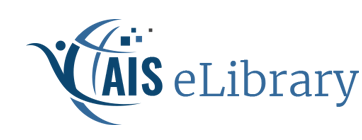Pacific Asia Journal of the Association for Information Systems
Abstract
Social media, enabled by various digital technologies, e.g., data analytics, blockchain, artificial intelligence, and augmented or virtual reality, has increasingly played a central role of monitoring, responding, optimizing, and influencing consumer behavior in digital business (Chou et al., 2025; Do et al., 2025). Since 2017, the immediate popularity of Douyin in China and later TikTok in the world brought the new paradigm of social media platforms by leveling down the threshold of video production and directing platform competition from celebrity/content centric to algorithm centric. Such a paradigm shift suggests new challenges and opportunities in digital business, i.e., constructing sustainable relationships among “content producers -- content consumers/customers -- businesses/brands”. The latest development of AI technologies also magnifies the significance of algorithms in content production, social medial platform competition and digital business models constructed over such platforms. Companies, brands and influencers are thus under huge pressure to understand the unique challenges and ecosystem of emerging social media platforms (Benbya et al., 2020) and to stay ahead of this powerful digital movement (Xie et al., 2022). This special section address the timely issues associated with emerging social media platforms and deepens the understanding of the latest opportunities and challenges for digital business and consumer insights in the Pacific Asia region (Jiang et al., 2019), by offering theoretical frameworks and practical strategies that bridge academic research with industry needs.
Recommended Citation
Li, Chenwei; Shen, Kathy Ning; Du, Qianzhou; and Tafesse, Wondwesen
(2025)
"Digital Business & Consumer Insights on Emerging Social Media Platforms,"
Pacific Asia Journal of the Association for Information Systems: Vol. 17:
Iss.
3, Article 5.
DOI: doi.org/10.17705/1pais.17305
Available at:
https://aisel.aisnet.org/pajais/vol17/iss3/5
DOI
doi.org/10.17705/1pais.17305

